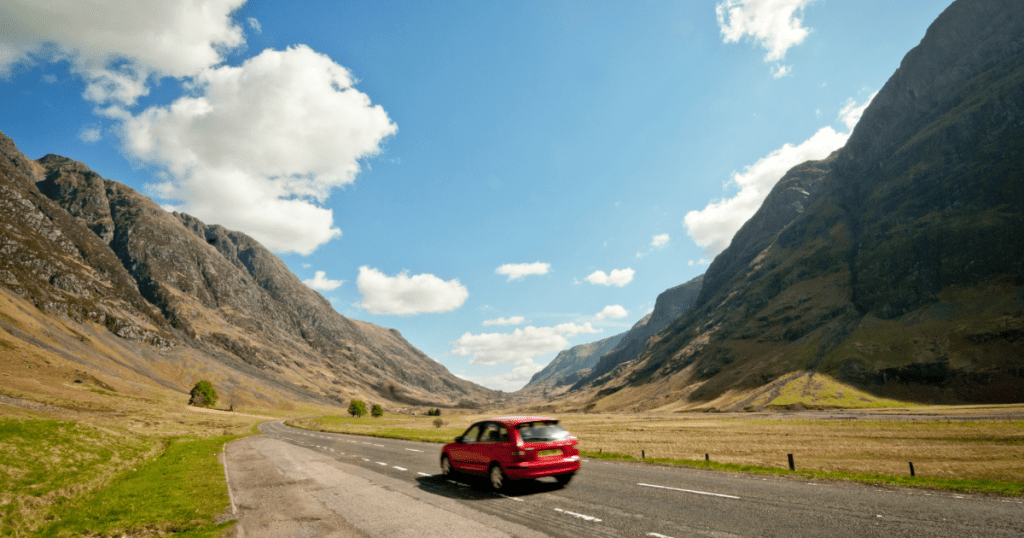Last Updated on November 20, 2024
Summer is a fantastic time for road trips and adventures, but it also brings unique challenges for drivers. As temperatures rise and traffic increases, ensuring road safety becomes paramount. Whether you’re heading to the beach, exploring the countryside, or simply driving around town, following summer road safety tips is crucial. This blog will provide you with essential advice to stay safe on the roads during the hot months, focusing on summer driving hazards, vehicle maintenance for hot weather, and safe driving in high temperatures.
Why Summer Road Safety Is Important
Summer driving poses several risks that can impact your safety on the road. From increased traffic due to holidaymakers to the effects of high temperatures on your vehicle, being prepared is essential. Understanding the specific hazards and knowing how to mitigate them will help you enjoy a worry-free driving experience. This blog aims to provide comprehensive guidance on summer car care tips and safe driving practices.
What To Look Out For When Driving In Summer
| Hazard | Description | Precaution |
| High Temperatures | Can cause engine overheating and tyre blowouts. | Regularly check engine coolant levels and tyre pressure. |
| Increased Traffic | More vehicles on the road, especially during holidays, leading to congestion and accidents. | Plan your journey to avoid peak times and stay patient in traffic. |
| Glare From The Sun | Reduced visibility due to bright sunlight. | Use sunglasses and sun visors to shield your eyes. |
| Road Construction | More roadworks during summer months can lead to detours and delays. | Stay updated on road conditions and allow extra time for your journey. |
| Fatigue | Longer daylight hours and heat can cause driver fatigue. | Take regular breaks and stay hydrated. |
| Wildlife On Roads | Increased animal activity in rural areas during summer. | Stay alert, especially in areas with wildlife crossing signs. |
| Motorcyclists and Cyclists | More two-wheeled vehicles on the road. | Give them plenty of space and check mirrors and blind spots regularly. |
| Sudden Summer Storms | Flash floods and reduced visibility from heavy rain. | Slow down, use headlights, and maintain a safe distance from other vehicles. |
| Teenage Drivers | More inexperienced drivers on the road due to school holidays. | Drive defensively and be prepared for unpredictable driving behaviours. |
10 Safety Tips For Driving In The Summer
Check Your Vehicle’s Cooling System
Ensure your engine coolant is at the correct level and that there are no leaks. An overheating engine can lead to severe damage, especially in high temperatures. Regularly inspect hoses and belts for any signs of wear and tear, as these components are crucial for your cooling system’s effectiveness. Consider having your coolant flushed and refilled if it hasn’t been done recently, as old coolant can lose its effectiveness.
Maintain Your Tyres
Regularly check tyre pressure, including the spare. Hot weather can cause tyres to overinflate, increasing the risk of a blowout. Inspect tyres for wear and tear and ensure they are properly inflated. Additionally, keep an eye out for any punctures or embedded objects that could cause a slow puncture.
Keep Your Windshield Clean
Clear visibility is crucial, especially with the increased glare from the sun. Clean your windshield and check wiper blades for any signs of wear. Replace them if necessary. Make sure your windshield washer fluid is topped up and consider using a fluid with a bug remover formula to help clear any insect debris more effectively. A clean windshield also reduces the chances of streaks that can obscure your view when the sun hits at a low angle.
Stay Hydrated
Dehydration can affect your concentration and reaction times. Keep a bottle of water in the car and take regular sips, especially on long journeys. Consider using a cooler to keep your drinks cold and take breaks in shaded areas to cool down. If you feel the symptoms of dehydration such as dizziness or headache, pull over and hydrate immediately.

Plan Your Journey
Avoid driving during the hottest part of the day when possible. Early mornings or late afternoons are cooler and usually less congested. Use navigation tools to check for traffic updates and plan your route accordingly such as Route Planner by The AA. Plan for rest stops to stretch and refresh yourself, and make sure your phone is fully charged before starting your trip. Consider downloading offline maps in case you lose internet connectivity.
Use Sun Protection
Protect yourself from the sun’s harmful rays by wearing sunscreen, sunglasses, and using sun visors. Consider window shades for the rear windows if you have passengers. UV rays can penetrate car windows, so it’s important to protect exposed skin. Wearing light-coloured, loose-fitting clothing can also help keep you cool and reduce sunburn risk.
Be Prepared for Emergencies
Carry an emergency kit that includes water, non-perishable snacks, a first-aid kit, a flashlight, and basic tools. A portable phone charger can also be a lifesaver in case of a breakdown. Include a reflective warning triangle and a high-visibility vest to make yourself visible to other drivers if you need to stop on the roadside. Familiarize yourself with the basics of changing a tyre and jump-starting a car.
Adjust Your Driving Style
Drive defensively and be mindful of other road users. Increased traffic and unpredictable driving behaviours require heightened awareness and patience. Keep a safe following distance and be prepared for sudden stops. Use your signals well in advance to communicate your intentions to other drivers and avoid aggressive driving behaviours like tailgating or sudden lane changes.
Monitor Your Car’s Battery
High temperatures can affect your car battery’s performance. Check for any signs of corrosion and ensure the battery is securely mounted. If your battery is older, consider getting it tested. Ensure the terminals are clean and free from rust. Carrying a set of jumper cables can be useful in case of an unexpected battery failure.
Check Your Air Conditioning
Ensure your air conditioning system is working efficiently. A functioning A/C not only keeps you comfortable but also prevents driver fatigue. If your A/C isn’t cooling as effectively as it used to, have it checked for refrigerant leaks. Regular servicing can help maintain the performance of your air conditioning system, ensuring it’s ready to handle the summer heat

Conclusion
Driving in summer requires extra attention and preparation to ensure safety. By following these road safety tips for summer, you can mitigate the risks associated with high temperatures, increased traffic, and other seasonal hazards. Regular vehicle maintenance for hot weather and adopting safe driving practices are key to enjoying your summer journeys without any hiccups.
FAQs
It’s recommended to check your tyre pressure at least once a month during summer. High temperatures can cause fluctuations in tyre pressure, so regular checks help maintain optimal tyre condition and safety.
If your car starts to overheat, pull over to a safe location and turn off the engine. Wait for the engine to cool down before opening the hood. Do not attempt to remove the radiator cap while the engine is hot. Once cooled, check coolant levels and top up if necessary. If the problem persists, seek professional help.
Yes, high temperatures can cause brake fluid to boil, reducing braking efficiency. Ensure your brake fluid is topped up and consider having your brakes checked before embarking on long trips.
To reduce glare, keep your windshield clean, use sunglasses with UV protection, and make use of your car’s sun visors. Avoid using dash cleaners that leave a shiny finish as they can increase glare.
While it is generally safe, precautions should be taken. Ensure your vehicle is in good condition, stay hydrated, take regular breaks, and avoid driving during the hottest part of the day. Monitor your car’s temperature gauge and be alert for any signs of overheating.









